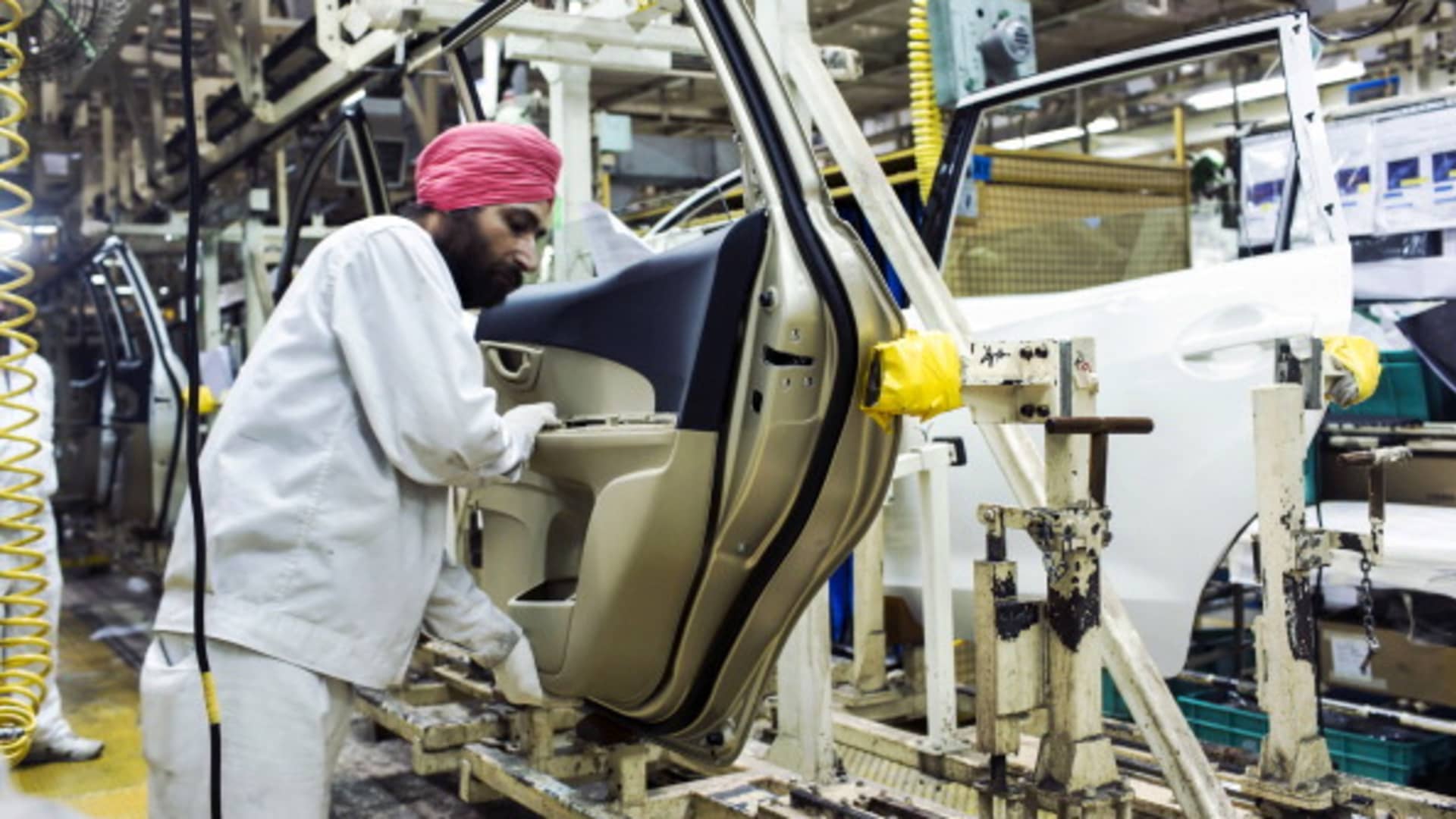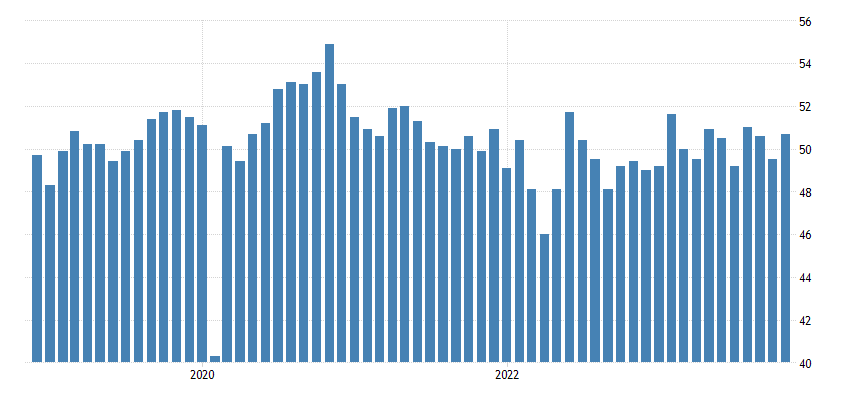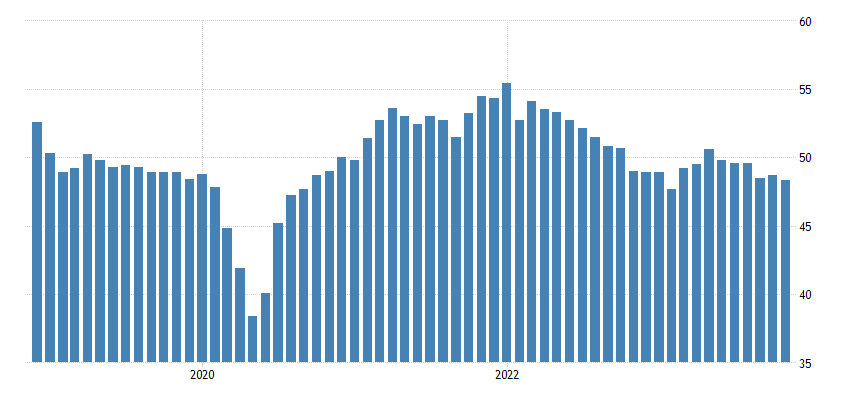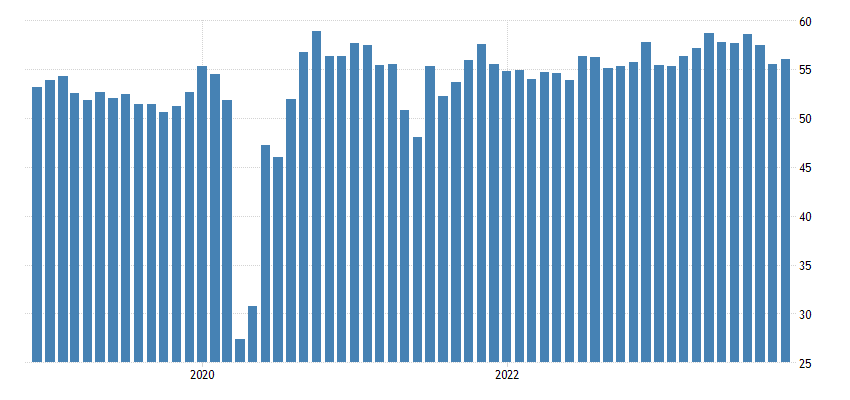Economy and business
China, Japan and India: PMI manufactures compared. Who grows the most?

Today the manufacturing PMI forecast indicators for three industrial giants-India, China and Japan-were released. As much as these are just forecast indices to be taken with a grain of salt, especially the Chinese ones, they do tell us something about what is going on in the world.
Let’s start with the big cheese, China: China’s Caixin general manufacturing PMI rose to 50.7 in November 2023 from 49.5 in October, beating market forecasts of 49.8 and indicating the highest reading since August. Both production and purchasing levels returned to growth despite Beijing’s recent efforts to revive a stagnant economy. In addition, new orders increased the most in four months, while the rate of job losses declined. Meanwhile, supply chain performance improved slightly for the second consecutive month.
Price data indicated that cost pressure remained subdued, with a modest increase in production costs, slower than in October. At the same time, efforts to attract and secure sales reduced pricing power, and selling costs remained essentially unchanged. Finally, sentiment improved to a 4-month high. Here is the related graph:

So China succeeds in seizing a moment of macroeconomic change and its manufacturing returns to expansion, unexpectedly, if only slightly. The domestic market is evidently pulling again, although the data should be taken with caution.
Let’s turn to Japan: Japan’s Jibun Bank manufacturing PMI index was revised upward to 48.3 in November 2023 from 48.1 in preliminary estimates and after 48.7 in the previous month, indicating the sixth consecutive month of contraction in industrial activity. However, the latest reading recorded the sharpest contraction in manufacturing since February, as output and new orders declined faster, with new export orders falling at the fastest rate since June. L
Unemployment declined for the second consecutive month, while the backlog declined the most in eight months, indicating that they had sufficient capacity to complete pending tasks. Purchasing activity decreased the most in nine months, while lead times lengthened. On the price side, production costs fell the least in three months, while production cost inflation slowed for the first time in three months, reaching the lowest level since July 2021. Finally, business sentiment improved on hopes of sustained improvement in demand following new product launches and a global economic recovery. Here is the related graph:

Here Japan, with one exception, has shown a contraction since late 2022. Japan is the factory mainly of Western countries, and its domestic market is smaller than China’s, making the economy more dependent on lackluster economies.
Finally, India: the S&P Global India Manufacturing PMI rose to 56.0 in November 2023 from October’s 8-month low of 55.5, in line with market consensus. This was the 29th consecutive month of increased industrial activity as production grew at an above-trend pace.
In addition, new order growth improved from the annual low in October and exceeded the series average; while foreign sales increased for the 20th month, albeit at the slowest pace since June. In addition, employment increased for the eighth month amid a slight increase in pending business.
Purchasing activity and input inventories increased, in many cases due to brisk demand conditions. The vast majority of panelists reported no change in lead times since October, reflecting a modest deterioration in supplier performance. As for prices, procurement costs have increased the least in 40 months. Here is the related graph:

Meanwhile, rates rose modestly as most companies decided to leave rates unchanged since October. Finally, confidence fell to a 7-month low due to rising inflation expectations.
India is the country with the highest expansionary expectations, but it experiences internal tensions related to very rapid growth, even too much, which, of course, comes to create problems, precisely because of this acceleration in development. The tension comes to be reflected in prices, and this creates restlessness, but it is also a sign of high-growth manufacturing. India, barring unexpected shocks, is the world’s next economic locomotive.
*** Translated with www.DeepL.com/Translator (free version) ***






